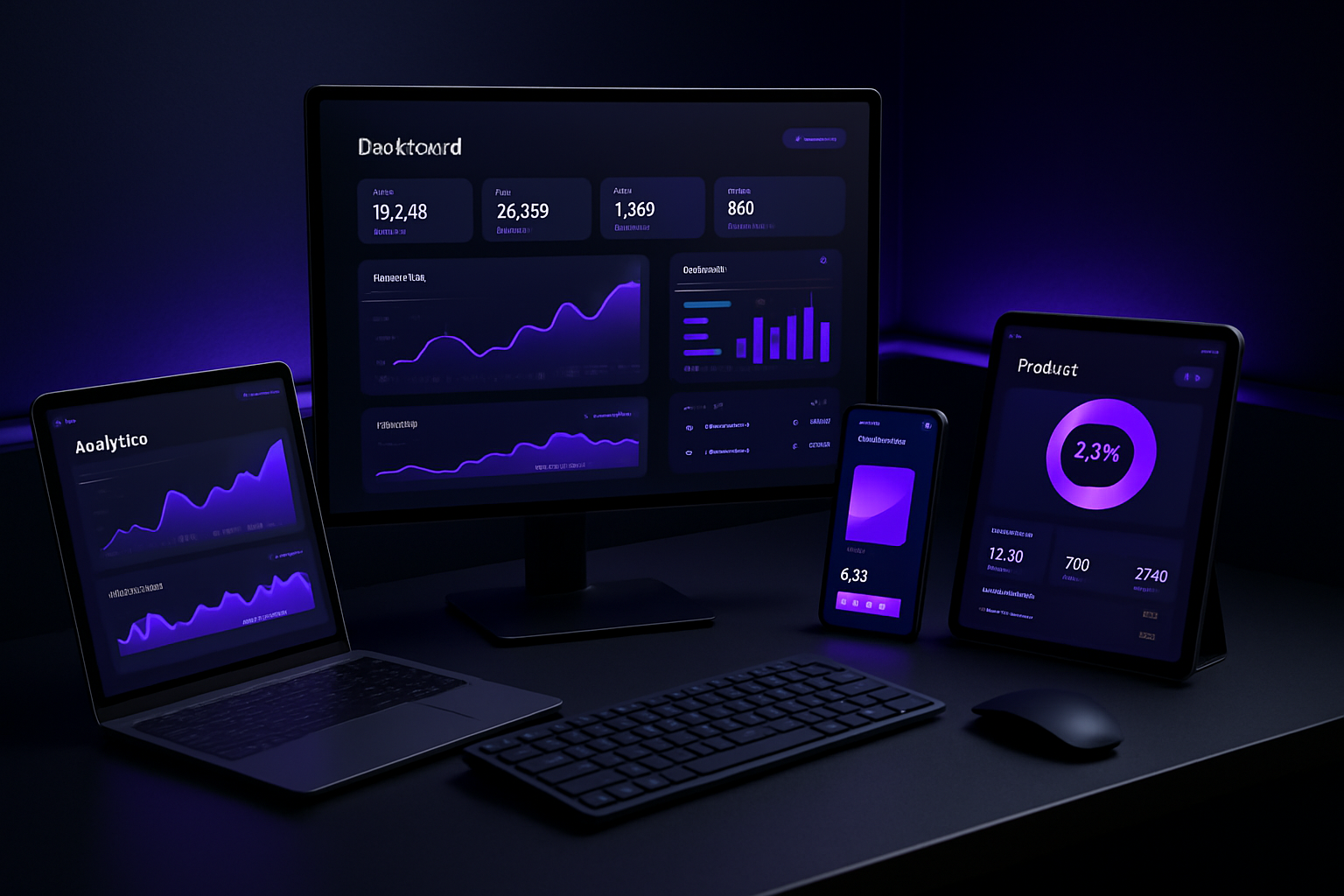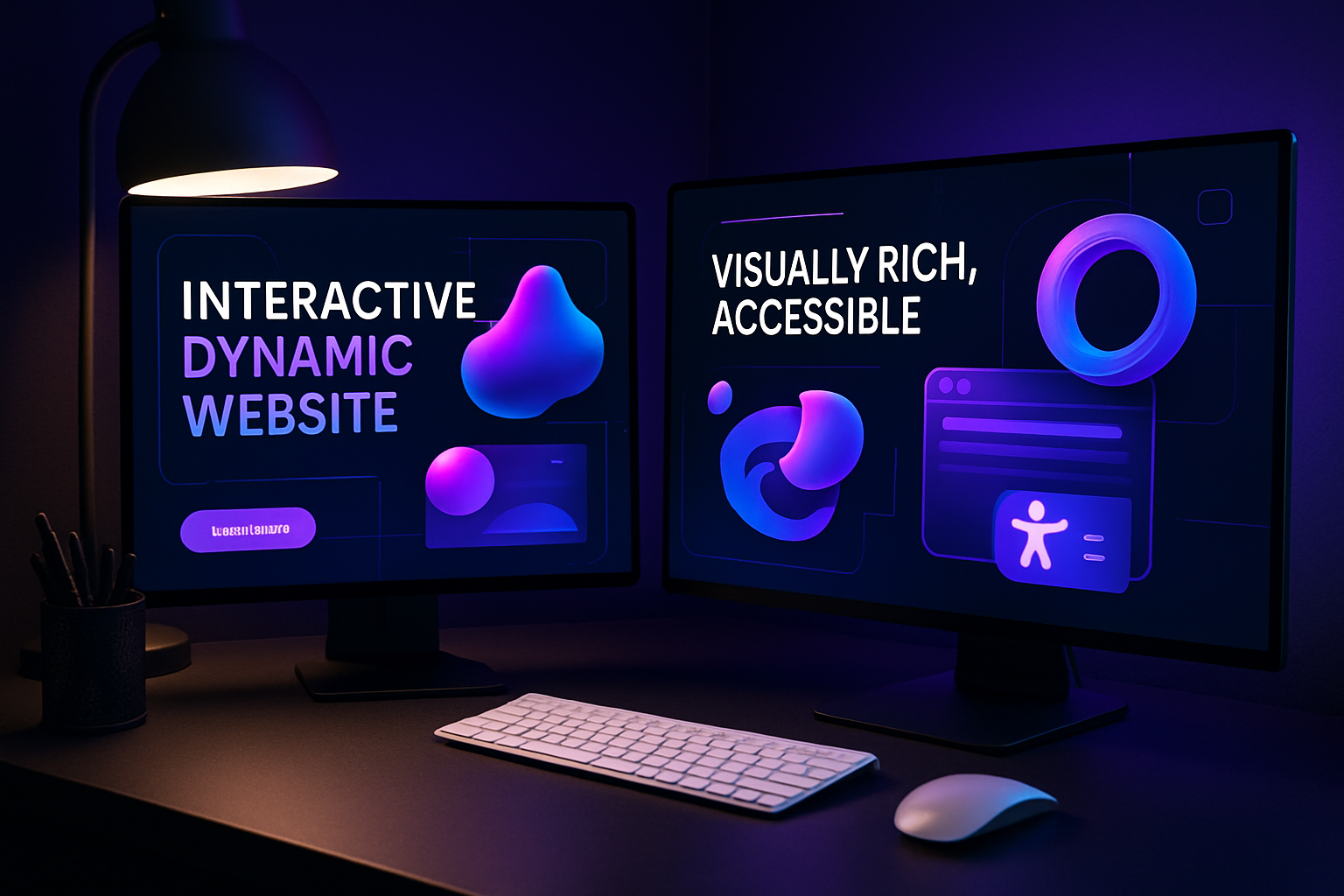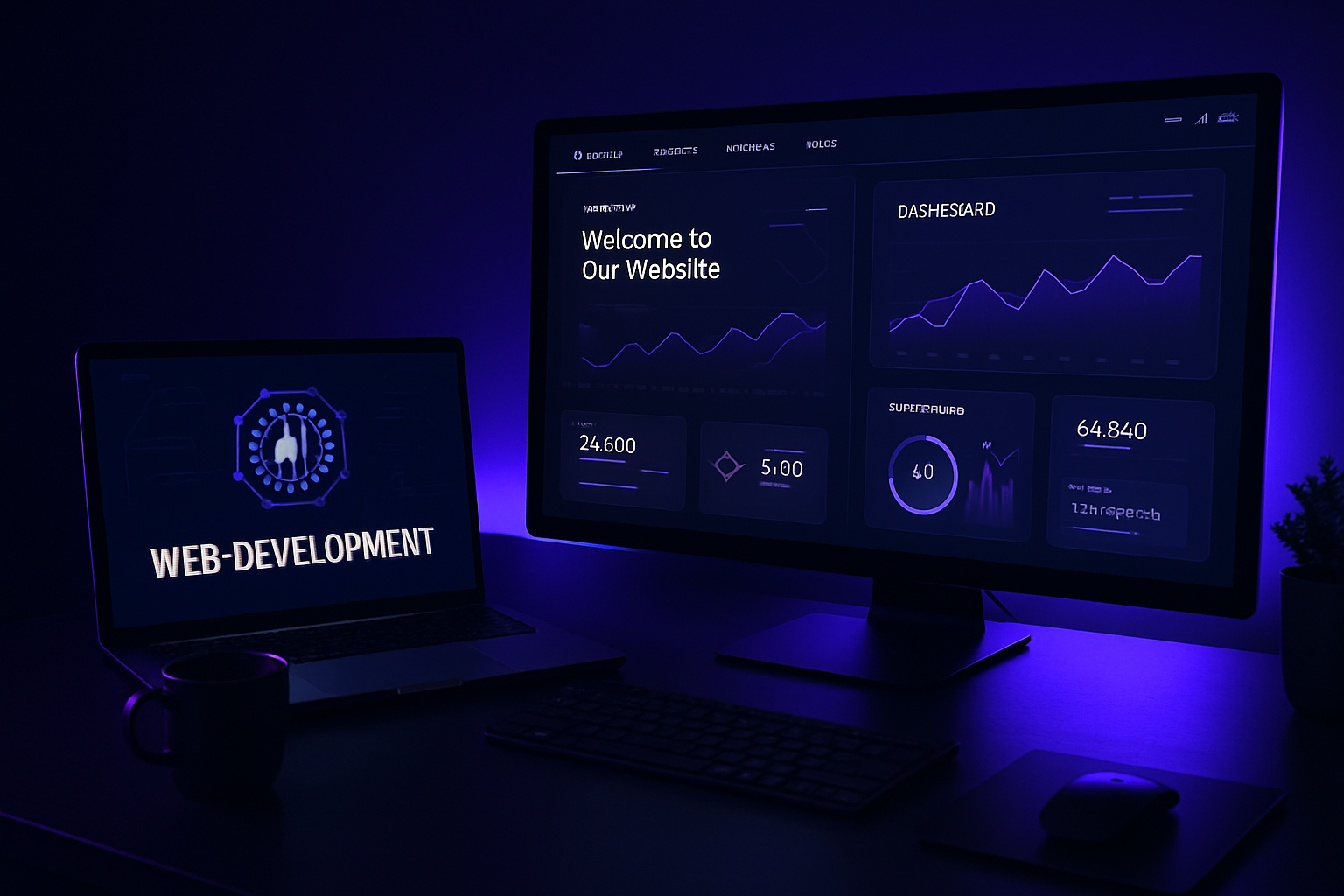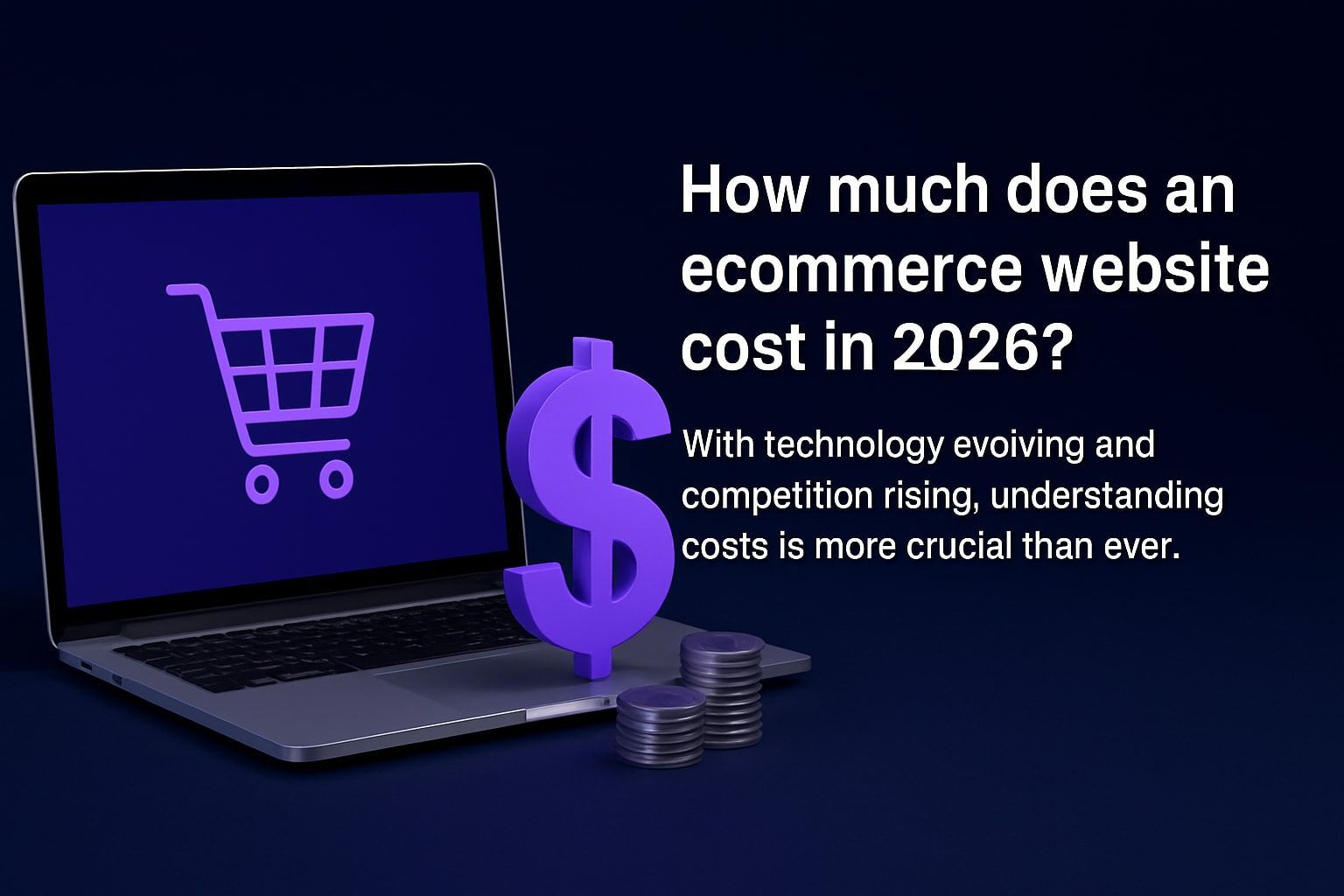7 Key Benefits of a Dynamic Website in 2025
Web technologies are evolving faster than ever, and user expectations in 2025 are at an all-time high. Businesses relying on static sites are finding it tough to keep up with this rapid pace of change.
A dynamic website is now the secret weapon for brands aiming to deliver personalized, interactive, and scalable experiences that truly engage visitors. If you want to stay ahead of competitors, embracing this approach is no longer optional.
In this article, discover the 7 key benefits of a dynamic website in 2025—from personalization and interactivity to SEO, scalability, integrations, advanced analytics, and future-proofing your digital strategy.
What Is a Dynamic Website?
Understanding what makes a dynamic website unique is essential for any business looking to stay ahead in 2025. Unlike static sites that display the same content to every visitor, a dynamic website delivers customized, interactive experiences by generating content in real time.

Definition and Core Concepts
A dynamic website is a web platform that automatically generates and serves content tailored to each user or context. Unlike static sites, which require manual updates for every change, dynamic sites use databases, server-side scripting (like PHP or Node.js), and APIs to present fresh, relevant content instantly.
| Static Site | Dynamic Website | |
|---|---|---|
| Content | Fixed, rarely changes | Personalized, updates in real time |
| Tech Stack | HTML/CSS, basic JS | Databases, server-side scripts |
| Management | Manual code edits | CMS, admin panels |
Modern dynamic website solutions often leverage content management systems (CMS) like WordPress, as well as frameworks such as React and Next.js. These platforms enable non-technical users to manage content, while also supporting developers with robust customization options. For those starting out, dynamic website templates offer a flexible foundation to build sophisticated, scalable sites.
Adaptability is a core strength. Dynamic websites can update news feeds, inventory, or user dashboards instantly, ensuring visitors always access the latest information.
Evolution of Dynamic Websites (2020-2025)
Between 2020 and 2025, the dynamic website has evolved from simple content management to highly interactive, AI-powered platforms. Early dynamic sites mainly automated basic updates. Today, they leverage artificial intelligence, machine learning, and advanced user tracking to deliver deeply personalised experiences.
According to HubSpot, over 60% of businesses adopted dynamic sites by 2024 due to their measurable impact on engagement and sales. Industry leaders like Netflix, HubSpot, and WhatsApp exemplify this evolution, using dynamic websites to power seamless streaming, personalised marketing, and real-time messaging.
The rise of mobile-first and omnichannel strategies has further driven this transformation. Businesses now demand unified experiences across devices, with dynamic websites adapting layouts, content, and features for every user and touchpoint.
Why Dynamic Websites Matter in 2025
In 2025, user expectations are at an all-time high. People want instant access to information, personalised recommendations, and seamless interactions. A dynamic website is uniquely positioned to meet these needs by harnessing AI, machine learning, and headless CMS architectures.
Emerging technologies are making it easier for businesses to analyse behavior and adapt content in real time. This agility is vital for responding to market changes or shifting user preferences. Recent studies show that dynamic websites can boost conversion rates by up to 30% compared to static alternatives, driven by improved engagement and relevance.
For businesses aiming to stay competitive, adopting a dynamic website is no longer optional—it’s a strategic necessity for growth, customer satisfaction, and future-proofing your digital presence.
7 Key Benefits of a Dynamic Website in 2025
- Enhanced Personalisation and User Experience
- Real-Time Content Updates and Easy Management
- Improved SEO and Search Engine Visibility
- Scalability and Future-Proof Flexibility
- Seamless Integration with Third-Party Tools
- Advanced Analytics and Data-Driven Insights
- Future-Ready for AI and Emerging Technologies
Staying ahead in 2025 means embracing a digital presence that’s not just modern, but truly agile. A dynamic website offers businesses the power to deliver tailored, interactive, and scalable experiences that static sites simply can’t match. Let’s explore the seven essential benefits that make a dynamic website the foundation of any successful digital strategy this year.

1. Enhanced Personalisation and User Experience
A dynamic website thrives on delivering experiences that feel personal. Instead of offering every visitor the same generic content, these sites use data like browsing history, location, and user preferences to tailor every interaction.
For example, e-commerce platforms can show personalised product feeds, while news portals highlight stories relevant to each user’s interests. AI and machine learning power recommendations, adapting in real time to user behavior. Imagine landing on a site that remembers your last purchase, suggests related items, and even greets you by name.
This level of personalisation leads to longer sessions and higher satisfaction. Studies show that personalised experiences can increase conversion rates by up to 20%. Users are more likely to return when a dynamic website anticipates their needs, making them feel valued and understood.
What’s the competitive edge? Real-time customisation. Businesses that deliver fresh, relevant content stand out in crowded markets. Your site becomes more than a storefront—it becomes a digital concierge. In 2025, this isn’t just a luxury; it’s a necessity for building loyalty and driving growth.
2. Real-Time Content Updates and Easy Management
A dynamic website empowers teams to update content instantly. With intuitive content management systems, staff can add news, update product listings, or launch promotions without touching a line of code.
APIs and integrations make it possible to sync inventory, update event calendars, or push alerts across channels in real time. This is a stark contrast to static sites, which require manual file edits for every change. The result? Faster response to market trends and opportunities.
Industries like news media, retail, and SaaS benefit immensely. For example, online stores can instantly update pricing or inventory, while SaaS companies roll out new features without downtime. Operational efficiency improves as workflows become streamlined and teams collaborate with ease.
Data shows that businesses using a dynamic website can reduce time-to-market for new campaigns by up to 50%. This agility means you’re always ready to capitalize on the next big thing—no more waiting for developer backlogs or cumbersome updates.
3. Improved SEO and Search Engine Visibility
One of the standout advantages of a dynamic website is its impact on search engine optimisation. Unlike static pages, dynamic sites can automatically optimize metadata, URLs, and content to align with the latest SEO best practices.
Features like schema markup, dynamic sitemaps, and AI-driven SEO tools help ensure your content is easily discoverable. Frequent updates keep your site fresh, encouraging search engines to crawl and rank your pages higher. Businesses that adopt dynamic website strategies often see significant boosts in organic traffic and engagement.
Schema markup is a type of structured data that helps search engines better understand your content and show rich snippets (like star ratings or FAQs) in results.
For example, companies leveraging dynamic website SEO strategies have reported measurable improvements in both visibility and click-through rates. Google’s algorithms increasingly favor sites that prioritize user experience and dynamic, relevant content.
By automating SEO tasks and adapting to algorithm changes, your dynamic website stays ahead of the curve. This means more qualified leads, increased brand awareness, and a stronger digital footprint in 2025.
4. Scalability and Future-Proof Flexibility
Growth is a given for ambitious businesses, and a dynamic website is built to scale. Whether you’re expanding your user base, adding new features, or entering global markets, the architecture adapts seamlessly.
Modular design and cloud hosting allow you to add pages, languages, or integrations with minimal fuss. Serverless technologies mean you can handle traffic spikes without costly infrastructure upgrades. Startups and enterprises alike benefit from this flexibility, scaling up or down as needed.
Adding new capabilities—like chatbots, payment gateways, or social feeds—becomes straightforward. This agility reduces technical debt and future-proofs your investment. Statistics show that organizations with a dynamic website save on long-term maintenance and avoid costly rebuilds as their needs evolve
.
Ultimately, a dynamic website is your launchpad for innovation. It grows with you, ensuring your digital presence never holds you back.
5. Seamless Integration with Third-Party Tools and Platforms
A dynamic website is more than just a standalone platform—it’s the hub of your digital ecosystem. Integration with CRMs, marketing automation, payment gateways, and analytics tools is simple and efficient.
APIs and microservices enable smooth connections between your site and business-critical systems. For e-commerce stores, this means syncing inventory with ERP software or connecting to social media channels for omnichannel campaigns. Chatbots and live support can be added in just a few clicks.
The benefits are clear
:
- Automated workflows save time and reduce errors.
- Data synchronisation ensures consistency across platforms.
- Unified customer experiences drive satisfaction and loyalty.
Case studies reveal that businesses leveraging integration see improved ROI and streamlined operations. Your dynamic website becomes the engine that powers your entire digital strategy, adapting to new tools as your business grows.
6. Advanced Analytics and Data-Driven Insights
Understanding your audience is key to success. A dynamic website collects granular user data in real time, from page views to click paths and conversion funnels.
Integration with advanced analytics platforms, like Google Analytics 4 or custom dashboards, provides actionable insights. Features such as behavioural tracking and heatmaps reveal how users interact with your content, highlighting opportunities for optimisation.
Here’s how this data powers decision-making:
- Identify top-performing content and campaigns.
- Optimize user journeys for higher conversions.
- Pinpoint friction points and improve usability.
Businesses using a dynamic website to drive marketing and UX decisions see measurable ROI improvements. Data-driven strategies aren’t just for big brands—any organization can harness the power of analytics to refine their approach and achieve better outcomes.
7. Future-Ready for AI, Automation, and Emerging Technologies
The pace of technological change is relentless. A dynamic website is designed to embrace the future, integrating AI, automation, and emerging tools with minimal disruption.
AI-powered chatbots handle customer support around the clock, while voice search and IoT integrations expand your reach. Personalisation engines deliver customised experiences, and AR/VR features create immersive digital environments.
Adopting new technology is simple—no need for major overhauls. Your dynamic website can plug into the latest innovations, keeping your business at the forefront of digital transformation.
Industry predictions highlight rapid adoption of AI and automation in web experiences for 2025 and beyond. Staying future-ready means your site is always aligned with evolving user expectations and market opportunities.
Dynamic Website Design Trends for 2025
The look and feel of a dynamic website are evolving at lightning speed in 2025. Today’s users expect immersive, interactive, and seamless experiences every time they visit a site.
\ Keeping up with the latest design trends is not just about aesthetics—it's about staying relevant and delivering the kind of engagement that modern audiences demand. Let’s explore the key trends shaping the future of dynamic website design.

Visual and Interactive Innovations
Dynamic website design in 2025 is all about captivating visuals and engaging interactivity. Websites now feature immersive animations, micro-interactions, and video backgrounds to draw users in and keep them engaged. Parallax scrolling and real-time graphics add depth, making every scroll feel like an adventure.
The integration of 3D elements is taking center stage, transforming static pages into interactive environments. For a closer look at how these elements enhance engagement, check out this overview of Immersive 3D Elements in Web Design. Leading examples like The Boat and Lusion demonstrate how a dynamic website can use these innovations to create memorable digital journeys.
Key trends include:
- Animated navigation menus and buttons
- Interactive product showcases with real-time customization
- Cinematic video backgrounds for storytelling
These techniques not only boost user engagement but also differentiate a dynamic website from competitors, setting a new standard for digital experiences.
Mobile-First and Accessibility Advancements
With mobile traffic dominating the web, a dynamic website must deliver flawless experiences on every device. Responsive, mobile-first designs are now the default, ensuring layouts adapt smoothly to all screen sizes. Designers are also embracing the latest accessibility standards, focusing on inclusive practices that make sites usable for everyone.
Accessibility is more than a legal requirement—it’s a business advantage. Research on Web Accessibility in Dynamic Applications highlights how accessible features, such as keyboard navigation and screen reader compatibility, are being seamlessly integrated into dynamic website frameworks.
Notable advancements:
- Scalable typography and touch-friendly controls
- High-contrast modes and customizable color schemes
- Semantic HTML for better assistive technology support
By prioritizing both mobile usability and accessibility, businesses ensure their dynamic website reaches and serves the widest possible audience.
Security and Privacy Enhancements
Security and privacy are at the forefront of dynamic website design trends in 2025. With greater interactivity and data exchange comes the need for robust protection. Modern dynamic websites leverage HTTPS, advanced data encryption, and compliance with global standards like GDPR.
AI-driven security tools now monitor threats in real time, identifying and neutralising risks before they impact users. Businesses are also adopting transparent privacy policies and user-centric controls, building trust and loyalty.
Key practices include:
- Automated vulnerability scanning
- Real-time activity monitoring dashboards
- Clear consent management interfaces
Emphasizing security and privacy not only safeguards users but also strengthens a dynamic website’s reputation in an increasingly competitive digital landscape.
How to Get Started with a Dynamic Website in 2025
Ready to elevate your digital presence? Starting a dynamic website in 2025 is all about making strategic choices that support growth, adaptability, and user experience. Whether you’re launching a new brand or upgrading your existing online platform, a dynamic website gives you the agility to stay ahead in a fast-moving digital landscape.

Choosing the Right Platform and Tools
Your first step is selecting the right platform for your dynamic website. Consider your project’s size, complexity, and future needs. Popular options include WordPress, Webflow, and custom headless CMS solutions. Each offers different strengths: WordPress excels in flexibility and plugins, while Webflow emphasizes visual design and ease of use.
Prioritize platforms that integrate AI and automation features, as these are essential for modern website management. For example, leveraging an AI-powered website assistant can streamline content updates, personalize user journeys, and automate routine tasks. Always assess scalability, security, and available integrations before committing.
Planning for Growth and Maintenance
A dynamic website requires a solid plan for ongoing development and optimization. Start with a user-focused design, then map out your content strategy, SEO goals, and performance benchmarks. Use modular frameworks so you can easily add new features or integrations as your business grows.
Regular updates are key—monitor analytics, refresh content, and test site speed frequently. Collaborate with your team to keep the dynamic website aligned with changing trends and user expectations. Think of your site as a living ecosystem that evolves with your business.
Budgeting and ROI Considerations
Budgeting for a dynamic website involves more than just the initial build. Factor in costs for integrations, cloud hosting, regular updates, and support. While upfront investment may be higher than a static site, the long-term ROI is significant. Dynamic solutions offer flexibility, automation, and data-driven insights that drive business growth.
For example, online retailers using E-commerce dynamic solutions often see improved conversion rates and operational efficiency. By investing in scalability and future-proof features, you position your business for sustainable success in 2025 and beyond.
"Fashion retailers using Avantiy’s dynamic templates saw a 26% increase in conversion rates and saved 18 hours per month in manual updates."
If you’re ready to take your business to the next level in 2025, there’s never been a better time to embrace the benefits of a dynamic website. With AI-driven design, seamless integrations, and powerful SEO tools at your fingertips, you can create a site that’s not only beautiful and interactive, but also tailored to your audience and ready to grow with you. Why settle for outdated, static pages when you can have something smarter and more adaptable? Let’s turn your vision into reality—Start Building Your Website Today.
Start building your new website today
No credit of debit card required start building today




